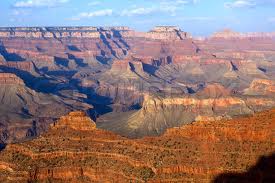|
19. Mechanism of f uture spring drying in the southwest U.S. in CMIP5 models. (in press). PDF In model projections of future hydroclimate one of the more robust features is a widespread drying, as in reduced precipitation minus evapotranspiration (P-E), across western North America in spring. Spring is not the main wet season in this area but follows the winter maximum of precipitation. A spring drying therefore indicates a shift to a shorter wet season. This likely has important ecological consequences as it will dry soils and reduce streamflows earlier in the year potentially leading to even lower flows and soil moisture in the summer season. While this spring drying has been noted by others before (Gao et al. 2014), here we provide the first detailed analysis of the mechanisms. Via a moisture budget analysis, we find that the spring drying is caused by increased dry advection from the Pacific into the west coast. As spring approaches, the land warms by more than the Pacific and this creates a cold-to-warm west-to-east temperature gradient. Given the relative humidity state of the atmosphere, this is reflected in a drier-to-moister west-to-east humidity gradient. In spring the prevailing winds have a westerly component and, hence, this allows for advective drying that suppresses P-E. (The temperature and humidity gradients are actually stronger in summer but the winds develop a northerly flow so the advective drying reduces.) As climate warms, the atmosphere above both the Pacific and the West warms. However, since in spring the air above land is already warmer than that over the Pacific, due to the exponential behavior of the Clausius-Clapeyron equation the saturation humidity rises by more over land than sea. Because relative humidity stays approximately constant this means that the west-to-east drier-to-moister humidity gradient intensifies and with it advective drying and reduced P-E. Indeed, here we show that the drying can be reproduced as a response to simply the change in zonal mean temperature with fixed relative humidity. This simplicity is why spring drying across the West is so robust in model projections. Here is a hydrological change with ecological consequences we can be sure to be occurring in the coming years and decades. REFERENCES
|
 EASM2: LINKING NEAR-TERM FUTURE CHANGES IN WEATHER AND HYDROCLIMATE IN WESTERN NORTH AMERICA TO ADAPTATION FOR ECOSYSTEM AND WATER MANAGEMENT EASM2: LINKING NEAR-TERM FUTURE CHANGES IN WEATHER AND HYDROCLIMATE IN WESTERN NORTH AMERICA TO ADAPTATION FOR ECOSYSTEM AND WATER MANAGEMENT | |
| Lamont-Doherty Earth Observatory of Columbia University 61 Route 9W Palisades, NY 10964
| |
|
| |